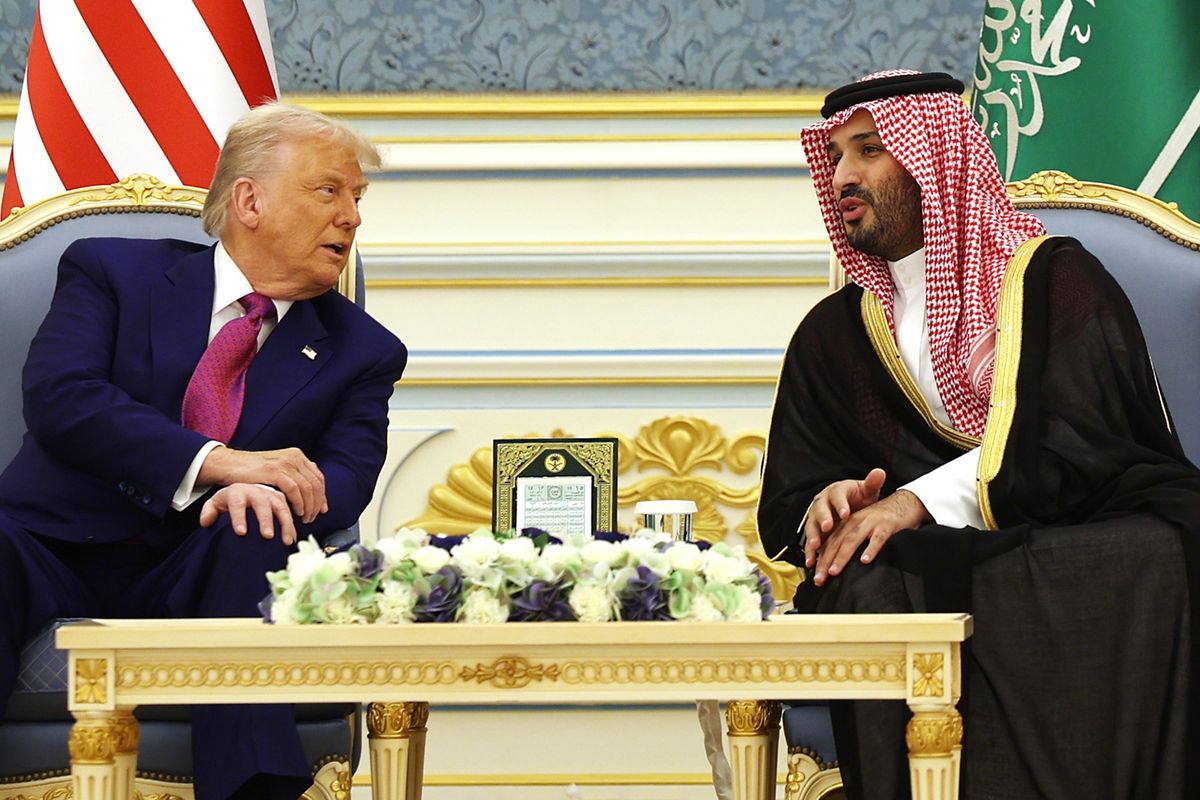On Saturday, Chinese President Xi Jinping arrived in Iran, the last stop on a whirlwind tour of the Middle East, which included visits to Egypt and Saudi Arabia as well. There, Xi upgraded the two countries’ relations to a strategic partnership and signed an agreement to increase bilateral trade by $600 billion, the latest development in China’s One Belt, One Road (OBOR) initiative.
Last week, President Xi traveled to Riyadh, where he promoted expanding cooperation between China and Saudi Arabia in energy and security, and jump-started the growing partnership by signing a $1.5 billion deal between the oil giants Sinopec and Saudi Aramco. In Cairo, President Xi signed loans worth $1.7 billion to bail out the tumultuous nation’s banks and announced investments to shore up Egypt’s infrastructure.
Much has been made of One Belt, One Road, ranging from its strategic importance to its ability to relieve the challenges of overcapacity in China’s industrial sector. To be sure, OBOR serves several objectives for Xi simultaneously, but for foreign multinational corporations (MNCs) the most critical factor is the state support OBOR provides Chinese companies in the international market.
Creating State Champions
In September, Beijing issued Circular 22, which put forward sweeping reforms for the largest and most important part of China’s economy: the state-owned enterprises (SOEs). But rather than offer a roadmap towards liberalization, the reforms outline how the government aims to bring China’s ageing behemoths into the 21st Century and compete on a global scale.
Internally, the document directs SOEs to restructure in order to form umbrella parent structures similar to holding companies. These structures should be able to more easily and fluidly invest in profitable and expanding subsidiaries, and divest out of ventures with overcapacity. Externally, the document proposes SOEs move up the value chain of production—from primary industry sectors, like steel and low-end manufacturing into innovative and high-tech sectors, such as biotech and robotics.
Notably, Circular 22 explicitly acknowledges that SOEs will receive state-led support for these new ventures. At home, the Made in China 2025 (modeled on Germany’s Industry 4.0) and Internet Plus initiatives will provide additional funding for SOEs moving into strategic sectors. Meanwhile, One Belt, One Road will serve as a vehicle for SOEs to expand abroad.
OBOR and SOEs
According to the official narrative put forth by the Chinese leadership, SOEs will be asked to carry-out many of the OBOR funded projects with the aim of reducing sectoral overcapacity and find anew the easy return on investment of large-scale infrastructure development that they had access to during the post-global financial crisis stimulus program.
That narrative has been duly questioned, and realistically OBOR will probably never reach a scale in short enough time to provide more than a trickle of relief to the massive overcapacity problem in China’s heavy industry. But even if the Chinese economy as a whole will not be affected much, Chinese SOEs individually stand to benefit significantly as OBOR could dramatically reshape the political dynamics of large-scale commercial projects in Asia over the coming decade.
Projecting Economic Power Abroad
As most clearly seen in cyberspace, Beijing is increasingly willing to leverage the full capabilities of the state in order to further the country’s commercial interests abroad. OBOR, though less sinister, aims to leverage China’s financial backing to similarly advance those commercial interests.
In Pakistan—where Beijing has offered funding for projects ranging from a hydroelectric dam to paving roads—and in Sri Lanka—where the once halted Colombo port project resumed earlier this month—foreign companies can expect Chinese competition to receive favorable treatment and access to opportunities unavailable to others. In both countries, Chinese SOEs were tasked with carrying out the largest construction projects.
President Xi’s trip to Saudi Arabia, Egypt and Iran has already led to similar deals. In addition to the cooperation agreement between Sinopec and Saudi Aramco, the Industrial and Commercial Bank of China (ICBC) announced it will open a branch in Riyadh to offer funding to Chinese- and Saudi-led projects. And with sanctions lifting on Iran, China is looking to leverage its already strong relationship to deepen commercial ties before the market becomes competitive.
Aligning with Beijing
For foreign firms, understanding how to align with Beijing’s priorities will now become critical not just for business in China, but also for business elsewhere in Asia. Political maneuvering by MNCs is part and parcel of doing business in China; not just necessary to avoid fines and expulsion, but also to forge successful partnerships and remain profitable. With Beijing’s commercial influence reaching beyond its borders, companies must now evaluate how that influence may affect their business equities across the region, and MNCs should take steps to evaluate their partnerships and associated political risks.












